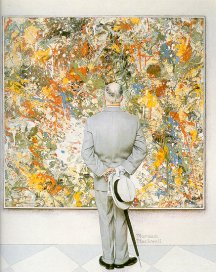You can play a complete Mozart concerto with one finger. It’s true. All you need is the Yamaha “Disklavier GrandTouch” electronic piano.
This keyboard instrument is programmed with actual great performances by famous musicians and orchestras. The keyboard “prompts” you for each key that you are supposed to play, and automatically provides the amazing accompaniment.
My question is, why would anyone want such a device? Why why why?
If you were to buy this keyboard primarily for the pleasure of hearing the music already programmed into it—the “great performances” by well-known musicians– why wouldn’t you just buy a CD of the same music and play it on your stereo? Or an MP3 file and play it on your computer? Or, if you wanted the thrill of seeing the music itself scroll by, how about a midi file? This has got to be the world’s largest, clunkiest, clumsiest, stereo system.
If you already know how to play music, why would you want to buy a piano that is programmed to play music performed by other musicians? What kind of satisfaction would there be in having the computer “accompany” you? Is it possible to be moved or inspired by an algorithm? Would you be proud of your performance?
And if you don’t know how to play music, why would you want to deceive yourself into thinking that you can, by sitting behind this keyboard?
Who would you think you were fooling?
As technology advances, the dreamers and schemers at the big and not-so-big high-tech corporations keep coming up with idiotic ways for you to spend your money. At $10K a pop, this keyboard is a particularly bad value. What kind of a society invests so much money into deceiving itself? This instrument represents the cosmetic surgery of creative talent. If your breasts are too small, you have them augmented. If your penis is too small, you buy a gun. If your brain is too small, you buy a Disklavier GrandTouch.
* * *
Consider some other deviant hybrids from ages past:
- the programmable typewriter (with the tiny LCD screen). It cost as much as a computer, for less than 1/10th the functionality.
- the moped
- the umbrella hat
and of course, one of the real winners for instant technological obsolescence:
- the winmodem
Personally, I think those big camper trucks—Winnebagos– are the same thing, but obviously people have yet to be convinced. You see them everywhere. They’re too big to travel around with in cities, and too small to provide a comfortable home on the go. They cost $45,000+. Think about that. How many days a year do you use it? Ten? Twenty? It would cost about $2,000 to stay in a good motel for twenty days. It would take about twenty years for the Winnebago to pay for itself. And that’s only if you don’t include insurance or gas.
Get a car and a trailer, I say, or, better yet, go to a motel. And if you really want to play the piano, take lessons. And if you can play the piano, buy a piano. And if you want to program music into a keyboard, buy a midi-compatible keyboard and a computer. That will only set you back $3,500. And you get a computer out of the deal as well.


 painting.
painting.